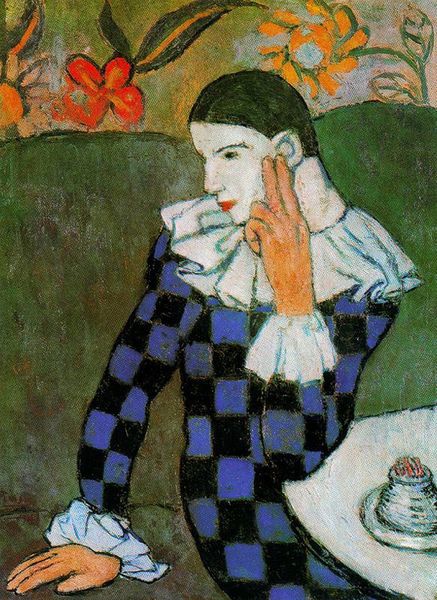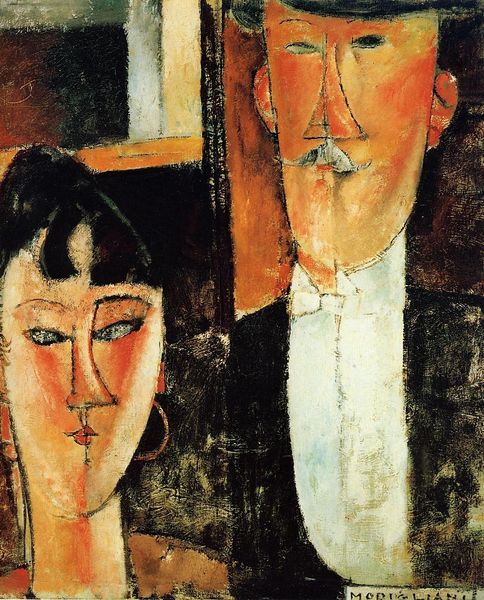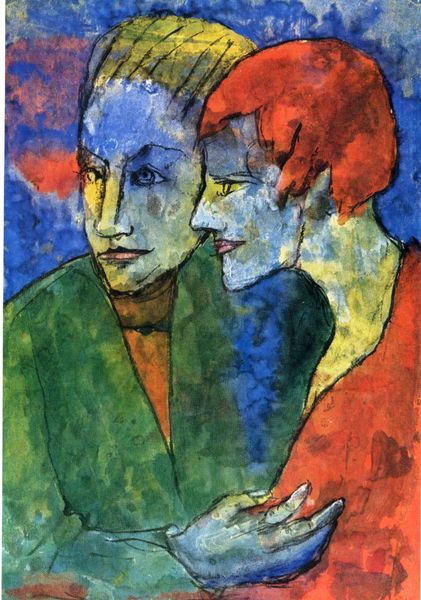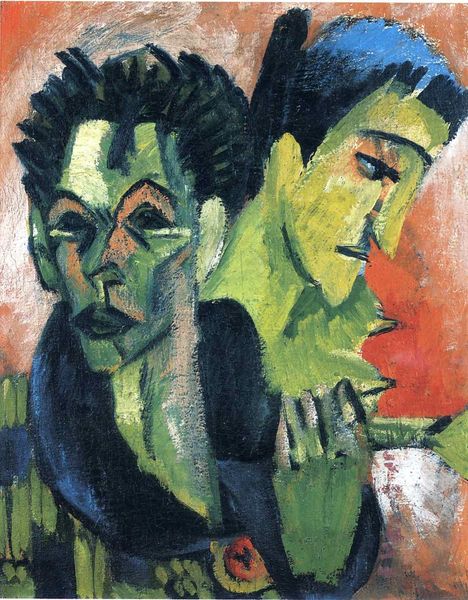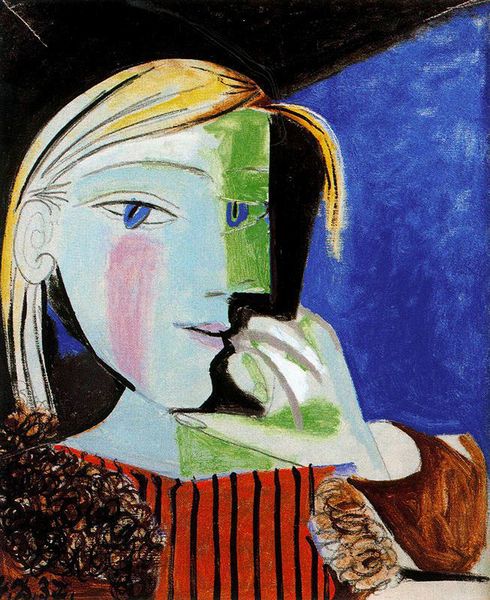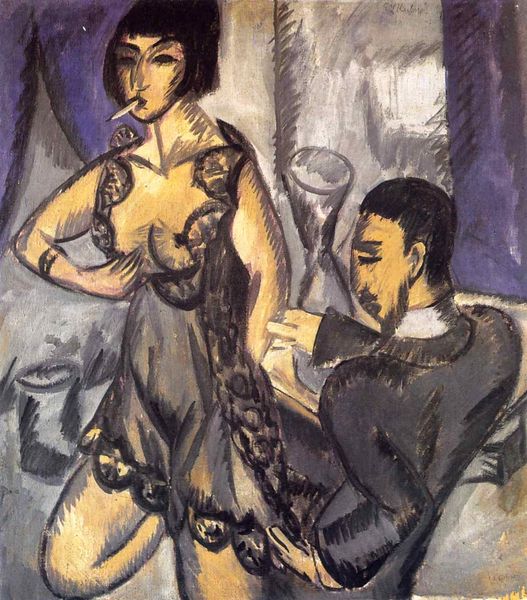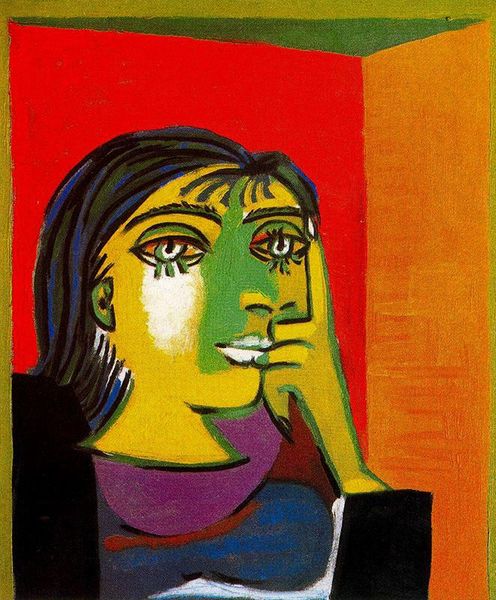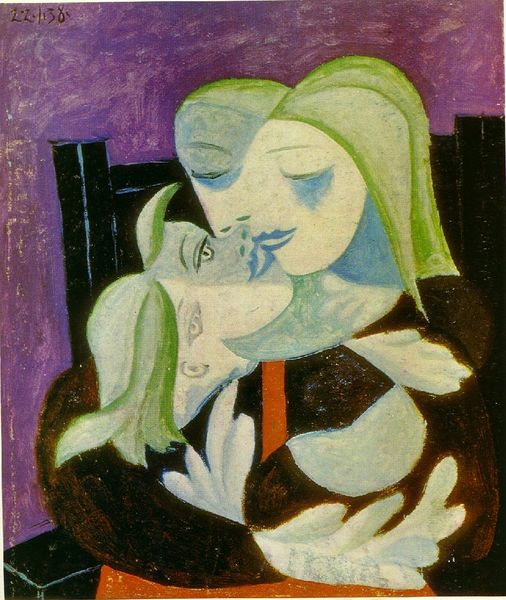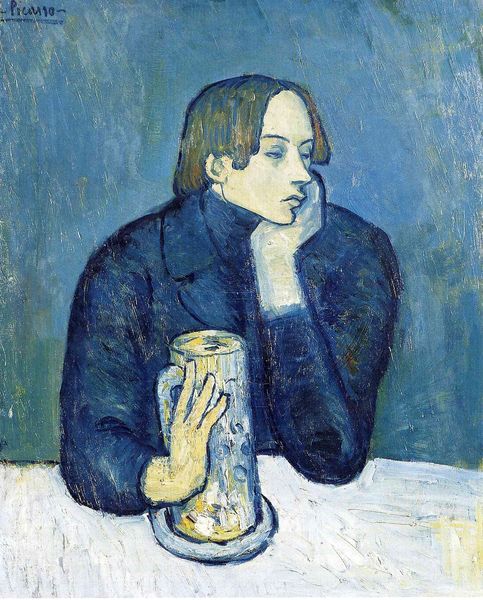
painting, oil-paint
#
portrait
#
cubism
#
painting
#
oil-paint
#
figuration
#
early-renaissance
Copyright: Public domain US
Pablo Picasso painted “Two Acrobats (Harlequin and his companion)" during his Rose Period, a time when the artist transitioned from the melancholy tones of his Blue Period to warmer, more optimistic colors. Here we see the figures of Harlequin and his companion at a table, rendered with soft brushstrokes and a muted palette. Picasso often depicted circus performers, identifying with their transient lifestyle. During this time, many artists and writers saw the figure of the Harlequin as a symbol for the artist. The harlequin was a representation of the artist himself: someone on the margins, who lives by his wits, and has no stable place in society. This particular painting is a window into the artist’s evolving understanding of identity and belonging. The figures in the painting seem lost in thought, a quiet moment of reflection amidst the performance of life, perhaps echoing Picasso’s own search for meaning and connection during this formative period. This introspective scene captures the shared human experience of contemplation, inviting us to reflect on our own identities.
Comments
No comments
Be the first to comment and join the conversation on the ultimate creative platform.


